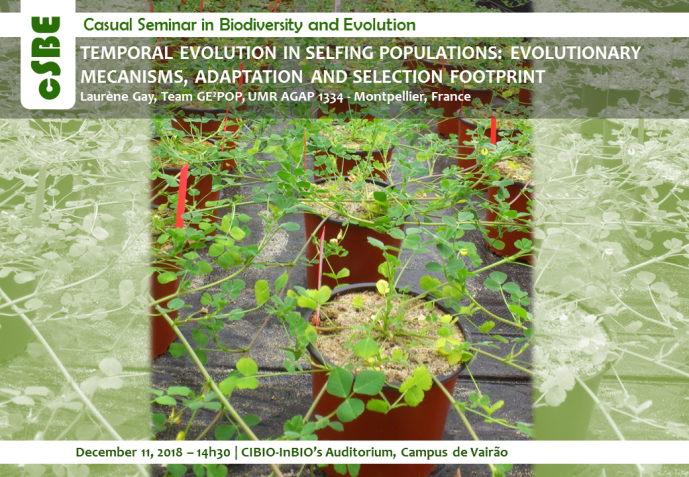TEMPORAL EVOLUTION IN SELFING POPULATIONS: EVOLUTIONARY MECANISMS, ADAPTATION AND SELECTION FOOTPRINT

CASUAL SEMINAR IN BIODIVERSITY AND EVOLUTION

Time series data are useful to understand the dynamics of genetic diversity in populations and the evolutionary mechanisms involved. In plants, this is made possible thanks to seed collections that can be preserved for a large number of generations. The mating system is known to affect genetic diversity in populations. In particular, genetic diversity is predicted to be low under predominant selfing and to be structured in homozygous lineages. Those predictions are strongly supported by theoretical models but empirical data remain scarce and specific tools for the study of population genetic diversity in self-fertilizing populations are still lacking. In addition, it has been argued that this structure is a consequence of the combination of selfing and selection favoring locally adapted genotypes. However, genetic drift is expected to strongly affect selfing populations and it is unclear whether genetic drift alone could be responsible for the stochastic increase of one or a few genotypes in the population. We developed indices to describe the multilocus diversity under predominant selfing and a simulation framework to provide analytical predictions under different demographic scenarios. We then compared the simulation results with empirical data on temporal samples from nine natural populations of the predominantly selfing plant species Medicago truncatula. Then, we tested the response to selection by focusing on changes in flowering time throughout the 25 generations separating the samples in one of the populations. We found a shift towards earlier flowering times and a significant selection gradient suggesting that there is still on-going selection towards earlier flowering. These results suggest that despite strong genetic drift, predominantly selfing populations can respond to selection. We discuss the implications for the hypothesis that selfing is an evolutionary dead end.
Laurène's research is focused on understanding the origin and maintenance of biological diversity. She studies for example how the balance between selection and gene flow can shape population diversification and how populations' characteristics such as size or mating systems can affect evolution. To this aim, she has combined several approaches, including population genetics, experimental evolution and quantitative genetics. Currently, she is focusing on temporal evolution of flowering time in natural populations of a Mediterranean legume species, in response to global warming.
[Host: Catarina Pinho, Functional Biodiversity]
Image credits: Laurène Gay
Click here to see the video of this seminar.
Available until January 27, 2018.